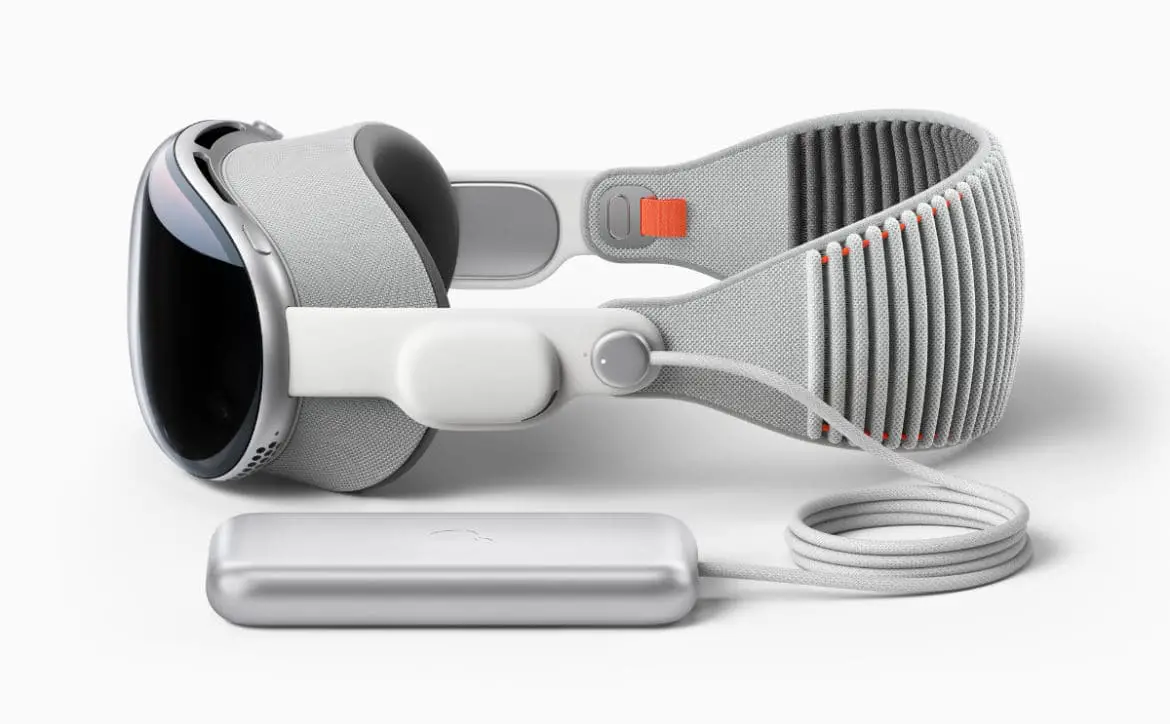Apple Vision Pro has been a hot topic since its announcement in June last year. The Apple Vision Pro marks the company’s first step into the AR/VR/AI and spatial computing space. Apple is usually one of the last big tech companies to move on new technology, so the fact they’re bringing up the rear is not surprising.
Estimated reading time: 5 minutes
There’s no doubt that Apple was feeling the pressure to release something in this space, as the technologies are advancing at such a rapid pace. But as with everything Apple does, they seem to want to present a marriage of elegance and technology in this device. But, let’s face it, wearing any face computer on your head makes you look a little silly and the Apple Vision Pro, despite painstaking efforts on Apple’s part, is no different.
I’ve hesitated to write anything about the Vision Pro because I wanted to give it a fair shot. However, when Tim Cook showed up on the cover of Vanity Fair sporting the new spatial computing device, I had thoughts. My first question was; Why is Vanity Fair writing a tech piece? Considering Vanity Fair is a fashion magazine aimed at the populace that cares about such things, it made little sense to me.
But, thinking about it over the next day helped me form some opinions I will share with you now. As this is an editorial, everything I am writing is merely my speculative mind at work. I present nothing as fact and you are free to come to your own conclusions. It’s also important to point out that I am in no way saying Apple Vision Pro will fail or that I dislike the concept. I’m merely commenting on what I think Apple is doing to push units out the door for a good first generation launch. Optics are key, if your first generation product doesn’t sell decently well, you may not make it to a second generation.
Feature Image Credit: Vanity Fair
Apple Vision Pro

Vanity Sells
Apple products are, I think it’s safe to say, expensive. While many users own and use the iPhone, iPad, and Apple Watch. Most users are financing those purchases through their mobile carriers, as it is easier to pay a small monthly fee rather than the full $1,200 for an iPhone 15 Pro Max or $800 for an Apple Watch Ultra 2.
Still, other users opt to buy on the secondary market, refurbished, or buy an older model, which saves money. My point being, most users are hard-pressed to afford Apple’s products and the cost is usually spread over a finance period.
Enter the Apple Vision Pro. Here we have a device starting at $3,500 that is first generation hardware and software. While there are financing options, financing it would amount to financing three iPhone 15 Pro Max smartphones. It is substantially pricier, and even finance options are costlier than Apple’s other mobile devices.
The company knows that the Apple Vision Pro is unreachable for a major portion of its buying audience. So their initial first generation play is to vanity purchasers. Running press in outlets frequented by those who care about having the thing others can’t, is a good way to grab some significant sales. The beauty of it is that this user base is less concerned about usability than status.
Apple needs sales to not only justify the Apple Vision Pro, but to also finance ongoing development for future generations of the device. So the play here is to grab as many users in the vanity crowd and the early adopters crowd, to help fund the first round of this device.
Both the early adopter and vanity crowds are willing to overlook technical hurdles that the Apple Vision Pro has, and there are a few.
Technical Hurdles and More
- Virtual Keyboard Woes: The much-touted “magical” in-air typing falls short, requiring laborious single-finger selection. Early reports suggest users will need external keyboards, diminishing the headset’s portability.
- Limited Battery Life: Two hours on a single charge is a dealbreaker for extended use, forcing users to constantly tether themselves to power outlets.
- Software Snags: Rumors of app compatibility issues and bugs in the new visionOS cast a shadow on the user experience. A smooth software foundation is crucial for AR adoption.
- Missing Features: The mysterious disappearance of the “Open Sky” VR feature just weeks before launch raises concerns about last-minute changes and potential instability.
- Content and Apps: Content and apps are a considerable part of new computing system, especially for consumers. Apple has always done well with partnering with developers, but the volume and quality of AR content is currently not as rich as some would want it to be.
- Privacy Concerns: The extensive data collection inherent in AR experiences raises privacy anxieties. Apple needs to address these concerns transparently to gain user trust.
- Social Acceptance: Wearing an AR headset in public might face social resistance, similar to the short-lived Google Glass. Overcoming this hurdle requires careful design and user education.
- Accessibility Challenges: Not everyone can comfortably wear a headset for extended periods, and visual or physical limitations might hinder certain interactions.
- Price: This is the biggest blockade to general mass sales of the Apple Vision Pro. Starting at $3,500, most people will not buy in, even if they like the tech. Thus, Apple is going to have to heavily rely on vanity purchase and early adopters.
Conclusion
Apple Vision Pro represents a significant step forward in AR technology. However, its technical limitations, hefty price tag, and nascent content ecosystem raise concerns about its readiness for widespread adoption. While some of Apple’s loyal fan base, early adopters, and vanity purchasers might embrace the early iteration. True mainstream success hinges on addressing these challenges and creating a compelling value proposition that extends beyond novelty and provides a broader usability factor.
What do you think? You may comment by using the social media buttons below. Please share on your favorite social media site and tag us on Facebook, X, MeWe, and LinkedIn. Or join our Telegram channel here.
In some of our articles and especially in our reviews, you will find Amazon or other affiliate links. As Amazon Associates, we earn from qualifying purchases. Any other purchases you make through these links often result in a small amount being earned for the site and/or our writers. Techaeris often covers brand press releases. Doing this does not constitute an endorsement of any product or service by Techaeris. We provide the press release information for our audience to be informed and make their own decision on a purchase or not. Only our reviews are an endorsement or lack thereof. For more information, you can read our full disclaimer.










